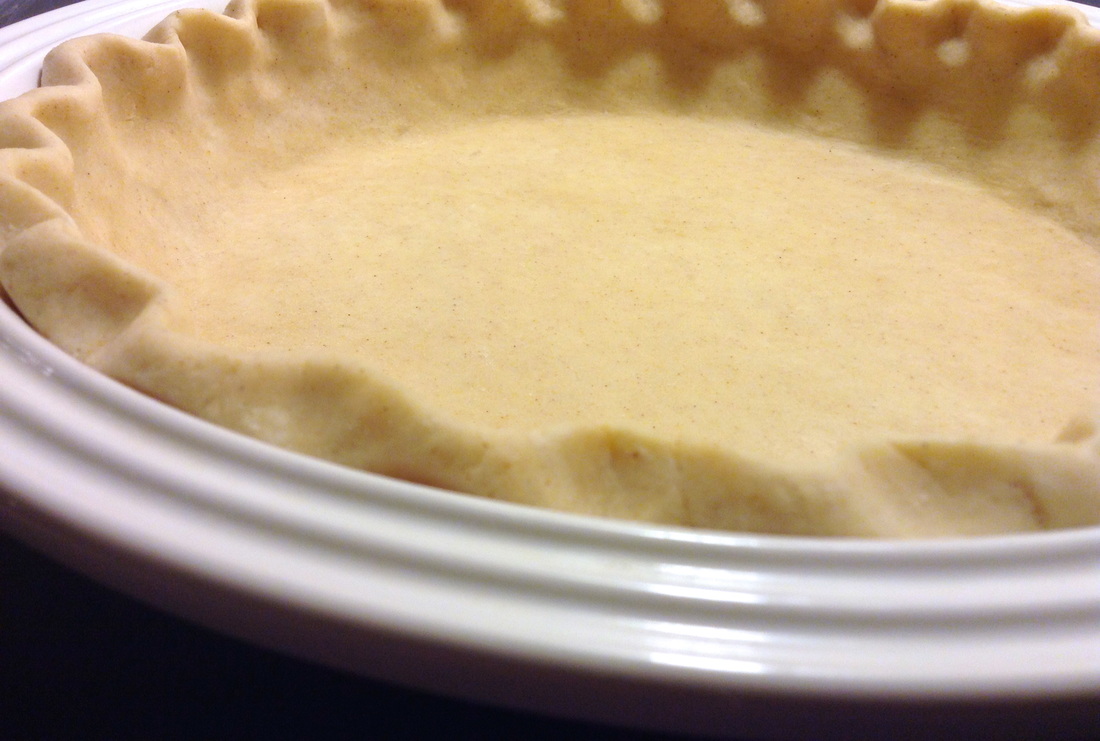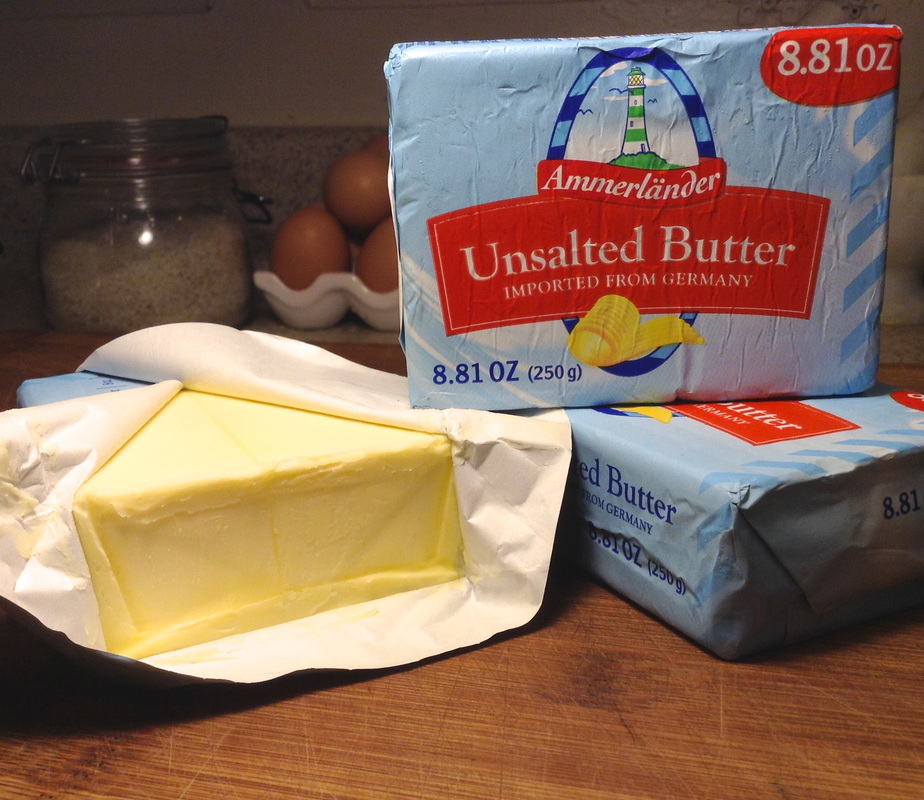In my experience the absolute best pie crust is made from a simple combination of butter and flour with a touch of ice cold water, and a bit of vinegar. The "secret" is to use the highest quality ingredients you can find. Quality organic flour, and fine "European" butter make all the difference. I like to use a locally milled organic flour that I can get in bulk, but King Arthur brand flour is a perfectly wonderful and widely available all-purpose flour. I use only Euro butter in my crust. This is mainly because the butter from Europe is cultured and has a lower moisture content. This process takes a bit longer and yields a bright yellow butter with more fat and less moisture than the butter commonly found in America. Too much moisture in your butter will make your crust tough and crumbly instead of tender and flaky. European cultured butter also has an amazing flavor that American sweet cream butter just can't beat! If you live in California and have access to Straus Dairy products, they make an excellent "European-Style" butter that is 85% fat. Quality butter tends to be more expensive. For this reason I tend to get my European butter from my local Grocery Outlet store. This store specializes in overstock items. You would be surprised at how often I find good butter for baking at half the price of other stores! Whenever I find it, I buy all they have and freeze it if necessary.
Basic Pie Crust
1 cup all-purpose flour
1/2 cup chilled butter
1/2 tsp *vinegar
1 -2 Tbsp *ice cold water
Place the flour in your mixer fitted with the paddle.
Dice the butter into small pieces. Be careful not to let the chilled butter get too warm.
With the mixer set to medium-low, begin adding the chilled diced butter to the flour a little at a time. Be sure to let it combine with the flour a bit before adding more butter. Once all of the butter has been incorporated, speed up your mixer and add the vinegar. You may notice that the added moisture from the vinegar will cause your dough to start to clump together a bit more. Keep the *mixer running and gradually add the ice cold water until the dough comes together into a rough, and slightly crumbly ball. You want the dough to be more on the dry side of things. Too much moisture will make for a tough crust that is very hard to work. This recipe makes enough dough for 1 pie crust. The recipe can be doubled.
Remove the dough from the mixer and use immediately, or wrap it tightly in plastic and put it in the fridge until you're ready go. This dough will keep in the refrigerator for about a week.
*Notes:
The amount of ice cold water that you will need may vary. Don't be surprised if you don't use all of the water that is called for in the recipe. You may even use a bit more than I have stated in the recipe. Just remember to keep things on the dry side. I add the vinegar to my crust recipe because it results in a slightly flakier crust. Vinegar also seems to provide more of the"blistering" effect, which I think looks pretty cool. If you don't have the vinegar don't worry. The recipe is okay without it as well. If you are using a food processor or hand pastry blender, the steps are basically the same.


 RSS Feed
RSS Feed